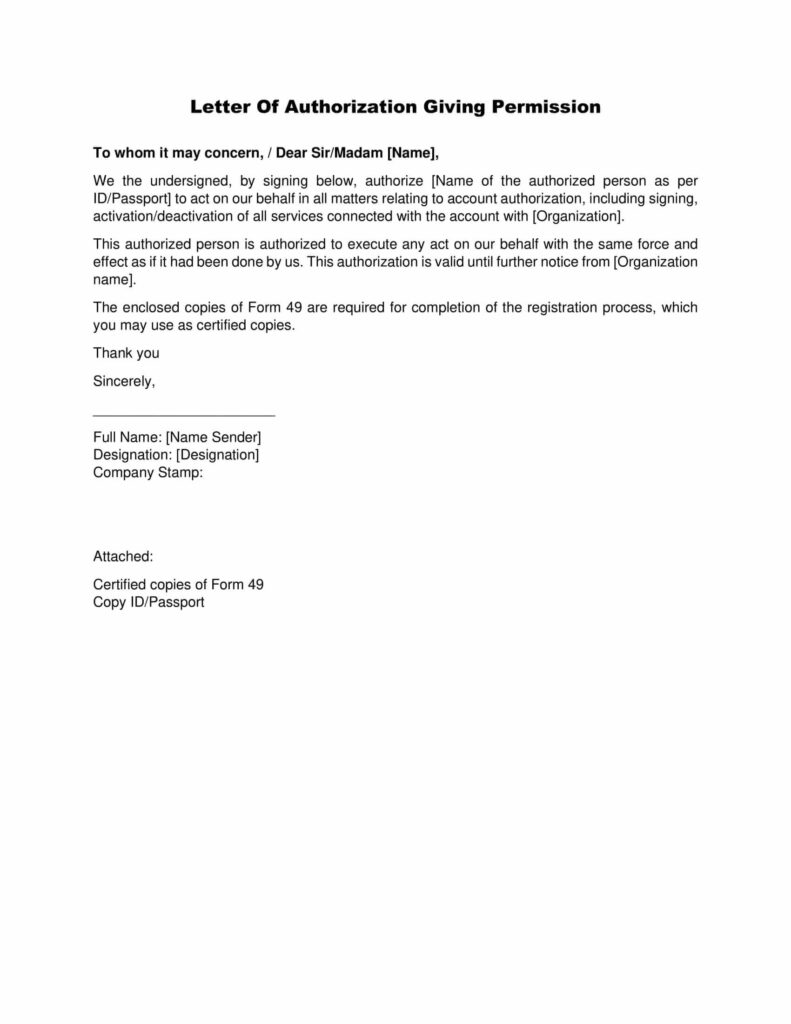Writing an authorization letter can be tricky, but there are some standard elements you can include to ensure that your letter is legal and official. In this blog post, we’ll review what you need in your authorization letter and provide a few examples of different types of authorization letters.
An authorization letter is a document that allows another person to act on your behalf. It could be for several reasons, but it is most commonly used when someone needs to pick up a package or document on your behalf or when you need someone to act as your representative in a business transaction.
What to Include in Your Authorization Letter
Table of Contents
There are some key elements that you must include in your authorization letter:
Your Name and contact information: This one is self-explanatory—you should include your Name and contact details at the top of the letter so that the recipient knows who is writing the letter.
The date: The date should be listed right after your contact information. It will ensure no confusion about when you wrote the letter.
The recipient’s Name and contact information: You should include the recipient’s Name and contact information after the date. It could be their mailing address, email address, or phone number—whatever contact method they prefer.
A Statement of Authority: The next element is a statement of authority. This section clearly states that you authorize someone else to act on your behalf. For example, “I at this moment authorize John Smith to withdraw $500 from my checking account at XYZ Bank on my behalf.”
It is a crucial section, so it should be clear and concise, as there should not be any confusion about what actions the person has been authorized to take.
Your signature: Finally, don’t forget to sign your authorization letter! It will make it official and legally binding.
Sample Letter of Authorization
To whom it may concern,
I am writing to authorize my sister, Jane Doe, to act on my behalf in all matters related to my estate. It includes but is not limited to the authority to sell or transfer any property belonging to me, sign any documents on my behalf, and take any actions necessary to settle my affairs.
This authorization is effective immediately and shall remain in full force and effect until revoked by me in writing.
Sincerely,
Your Name Here
Your Signature Here ____________________________________________________
Date: Notarized Seal/Stamp:
_______________________ _______________________
What to Write in Different Types of Authorization Letters
Now let’s go over a few examples of different types of authorization letters and what you might want to include in each one.
- Giving someone permission to pick up a package or document on your behalf: In this case, you’ll want to include the date and time when they can pick up the box, as well as any other instructions for how they should go about doing so. For instance, if they need to show identification at the front desk, mention that in your letter.
- Giving someone permission to act as your representative in a business transaction: If you’re authorizing someone to attend a meeting or sign documents on your behalf, you’ll want to specify exactly what type of meeting or transaction it is, as well as what authority they have to represent you (e.g., “full authority,” “limited authority,” etc.).
- Giving someone permission to access your accounts: If you’re authorizing someone else to access one of your financial accounts, make sure to state exactly which account it is and what types of transactions they’re allowed to make on your behalf (e.g., “withdrawing funds,” “Transferring funds,” etc.).
Conclusion:
An authorization letter is a legal document that permits another person to act on your behalf in a specified way. When writing an authorization letter, include the date, your Name and contact information, the Name and contact information of the person you’re authorizing, and a statement about what powers or permissions you’re giving them. You should also sign the letter to make it official.

Peyton Bagley is an English teacher and letter writer from the United States of America. She has been teaching for over 15 years and loves helping her students improve their writing skills. Peyton has also worked as a freelance writer and editor for several years. In her free time, she enjoys spending time with her family, reading, and hiking.

